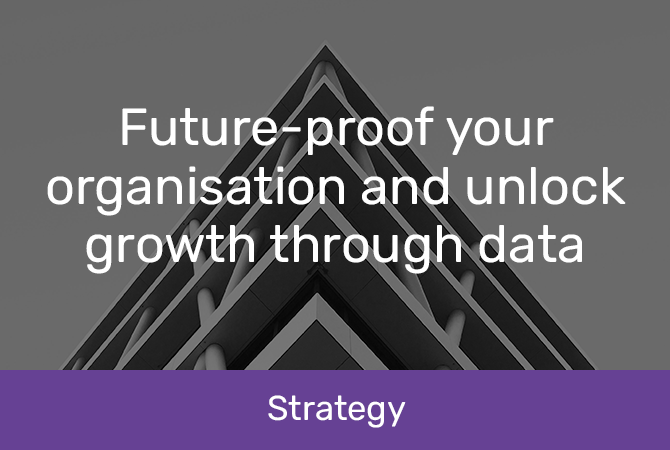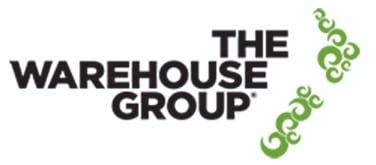
Future-proof your organisation and unlock growth through data
Future-proof with data analytics for better-informed decisions, improved systems and streamlined processes
A future-proof business has the resources and systems it needs to ride out challenges and take advantage of good times. When efficiency and resilience are built into every team and workflow, you’re set up for growth and informed decision-making – no matter what.
Across Australasia, businesses are navigating a mixed economic landscape, with growth challenges persisting in some areas while opportunities arise in others. The good news: there’s still time to get future-ready – and it all starts with data. Data analytics can help you minimise costs, maximise revenue, enhance the customer experience, predict upcoming trends, and react to a shifting market. Whether your market is flourishing or not, harnessing the power of data can make a real difference.
Benefits of data in business operations
The benefits of data in business operations are wide-ranging, as analytics can be applied to almost any business area. In terms of resilience-building and future-proofing, data can drive proactive decision-making and a better customer experience, optimise product lines, and maintain sustainable growth. These benefits add up to improved profitability in the long term, which can help insulate against financial challenges.
Here are some of the ways data analytics can help support business resilience:
 Proactive decision-making
Proactive decision-making
Proactive decision-making involves making long-term choices based on future probabilities rather than scrambling to react in the moment. This is where data-driven Predictive Modelling comes in. This type of analytics approach uses historical data, along with broader sales trends and market shifts, to test the potential impact of decisions or events, both internal and external. It can help your leadership team see the likely impact of a financial crash or downturn and try various approaches to weathering the storm.
 Enhance customer experience
Enhance customer experience
Enhancing the customer experience is particularly important in the age of personalisation and increasing customer expectations. If your team can’t deliver a smooth, cohesive experience that meets your customers’ needs, they’ll look elsewhere. Customer Profiling, which helps you group and understand your customers so you can target them more accurately, is essential here.
 Inventory and product management
Inventory and product management
Product and inventory management can make a huge difference to profitability. That’s because inventory represents a significant business cost, especially if it ends up sitting in storage or being sold at a discounted rate. Data can help your team find a balance between overstocking and understocking – that ‘just right’ inventory level.
Category analytics can help you spot trends, optimise your product range, and set prices at the right point. This means customers get the products they want while there’s less cash flow tied up in unsold inventory.
 Data-driven profitability
Data-driven profitability
Data-driven revenue management can be the difference between a business that struggles to keep up when sales drop and one with a bit of wiggle room. It’s crucial to know where money is going – inventory costs, rent, staffing, software or marketing – so your teams can identify cost-cutting opportunities. It’s also important to know what drives profitability and value so your marketing and sales teams can focus their energies in the right places.
 Risk management and fraud detection
Risk management and fraud detection
Risk management and fraud detection are data-powered essentials for growing businesses. Trends in historical data can be used to predict and prevent risky decisions. For example, a financial services business could use payment history and other details to identify customers likely to default on their loans. Similarly, fraud detection works by analysing large volumes of data and identifying patterns or anomalies that could point to suspicious activity. This information can then be fed back to your fraud detection team for further analysis.
Use data to drive business growth
Business growth is a key goal for most organisations – and a crucial part of future resilience. Data has an important role in growth, helping you refine your target audience, create personalised marketing, anticipate future sales trends, and track real-time performance.
Here’s how:
Boost sales revenue with hyper-personalisation
Hyper-personalised and targeted marketing is an effective way to boost revenue. According to McKinsey, personalised marketing can lift revenue by 5-15%, increase marketing ROI by 10-30%, and reduce customer acquisition costs.
Data is the driving force behind this marketing approach. With Customer Segmentation, marketing teams can analyse the audience, define key customer groups, and use that insight to tailor ads and pick effective marketing channels. Hyper-personalisation takes this to a new level, using details pulled from CRM software to create messages and recommendations for individual customers.
Anticipate future trends with predictive analytics
Anticipating future trends can give organisations a head start on growth and competition when market conditions are in flux. If your marketing or product teams know what customers are looking for early on, they can spring into action and take advantage.
Predictive and recommendation models can test the validity of a new product or marketing approach, helping teams understand the potential impact on revenue and customer numbers before making a change.
Refine target audiences
Refining the target audience for your brand is the best way to maximise the impact of marketing budgets. While marketing and communications teams will already have a target audience in mind, they could miss potential customers in other groups if the approach doesn’t resonate with them.
Acquisition Modelling can identify those untapped customer groups and their potential value so your marketing team can target the right segments.
Marketing automation through data
Marketing automation has a dual purpose – it can save money and time for your marketing team and make marketing more effective. In times of change and uncertainty, it can make all the difference.
Marketing automation involves identifying and automating key parts of the marketing workflow. This can help your teams respond to customer behaviour in real-time, maximising potential sales and minimising the risk of churn. Automation uses CRM data to trigger actions – for example, if the system notes that a customer hasn’t made a purchase in X months, it could mark them at risk of churn and send a personalised offer.
Enable faster decision-making with real-time analytics and insights
Fast, responsive decision-making is crucial at any time – when markets and economic conditions are shifting, it’s even more important. Data analytics is about assessing market conditions and tracking changes, with Analytical Visualisation to put findings into perspective. With a clear, visual breakdown of sales over time, changing demand and other metrics, it’s easier to make clear, data-driven decisions.
Streamline processes with automation
Data-driven process automation can help minimise repetitive manual tasks and support fast, accurate decision-making. Automated analytics tools can sort through data and surface key insights for the day or week, making it easier to respond to sudden market changes or spikes in sales numbers.
With the right tools in place, organisations can also streamline workflows, reducing the burden on teams. For example, an analytics tool could route customer queries to the right team member based on keywords used in the question, reducing work for employees and accelerating resolution time for customers.
 Embed data and analytics into your organisation
Embed data and analytics into your organisation
Data analytics isn’t a one-off activity. It’s an ongoing process of tracking, analysing, reviewing, and analysing again. With embedded data and analytics tools, that process becomes part of the day-to-day for marketing, operations, finance and leadership teams.
Invest in data infrastructure and technology
Investing in data infrastructure and technology pays off in the long term, as it gives teams the right tools when they need them. For example, a custom analytics application tracks key metrics, analyses the data, and presents results in an accessible, user-friendly interface.
Develop data-driven strategies
Data-driven strategies put data at the centre of everything your organisation does. This means integrating data into all planning and decision-making – from marketing and recruitment to operations.
Emphasise data quality and governance
Data quality and governance are crucial for organisations that want to make the most of analytics tools. Start with Data Cleaning, which involves consolidating data from multiple sources, deleting duplicates, and removing incomplete information so your teams know that they’re working with the most accurate data available.
Invest in skilled talent
Skilled talent is an essential part of future-proofing. After all, if an organisation doesn’t have the internal capacity to manage data analytics and all the business-building activities that flow from it, it’s unlikely to get the full benefit. HR Analytics can be an invaluable tool here, as it helps refine recruitment strategies, identify talent gaps, and minimise turnover.
 Future risks of data and analytics in business
Future risks of data and analytics in business
The risks involved with using data and analytics in business don’t come from the tools themselves but from the quality and volume of the data, and the potential for privacy and security breaches. If your organisation partners with an expert data management team, it can protect against these challenges.
Data overload and poor data quality
Data overload and poor data quality can happen when a business has years of historical data stored in different databases and software systems. Because data is scattered and inconsistent, it can be hard to draw out reliable insights, making it far less useful for predictive modelling or other analytics work. In many cases, a Datamart – a data repository built for a specific purpose – is the best way to consolidate relevant data, ensuring that it’s up-to-date and accurate.
Data privacy and compliance
Data privacy and compliance issues arise in any major data project. The key is being aware and putting safeguards in place during the planning stage. Things like anonymising and aggregating data, ensuring customer information is stored safely, and asking for consent before collecting browsing data are all important parts of compliance.
Data and cybersecurity
Data security should be a priority in every business function, and analytics is no exception. When an organisation is collecting personal data from customers, there are always opportunities for leaks or data breaches. Your security team can reduce the risk by choosing a secure cloud storage provider, setting rules and guidelines around internal data access, and putting security measures in place to protect against malware, phishing scams and other cyberattacks.
Focus on the future with Datamine
Whether the economy is in a financial downturn or a boom, the future is never certain for businesses. That’s why future-proofing is a smart strategy – it gives teams the tools and resources they need to maximise their potential, whatever happens. Organisations with the ability to make future-focused, data-driven decisions run more effectively, and they’re in the best position to grow as Australia and New Zealand emerge from tough economic times.
At Datamine, we believe data is at the heart of long-term success – that’s why we’ve been in the business for more than twenty years. We’ve helped businesses of all stripes use their data to drive lasting change, build resilience, and ride out economic and market waves. Whether your organisation is looking for support with predictive modelling, data-driven automation, customer targeting tools or all of the above, we can make data part of the day-to-day.
Get in touch to talk data analytics, future-proofing and your organisation.
Further reading























































